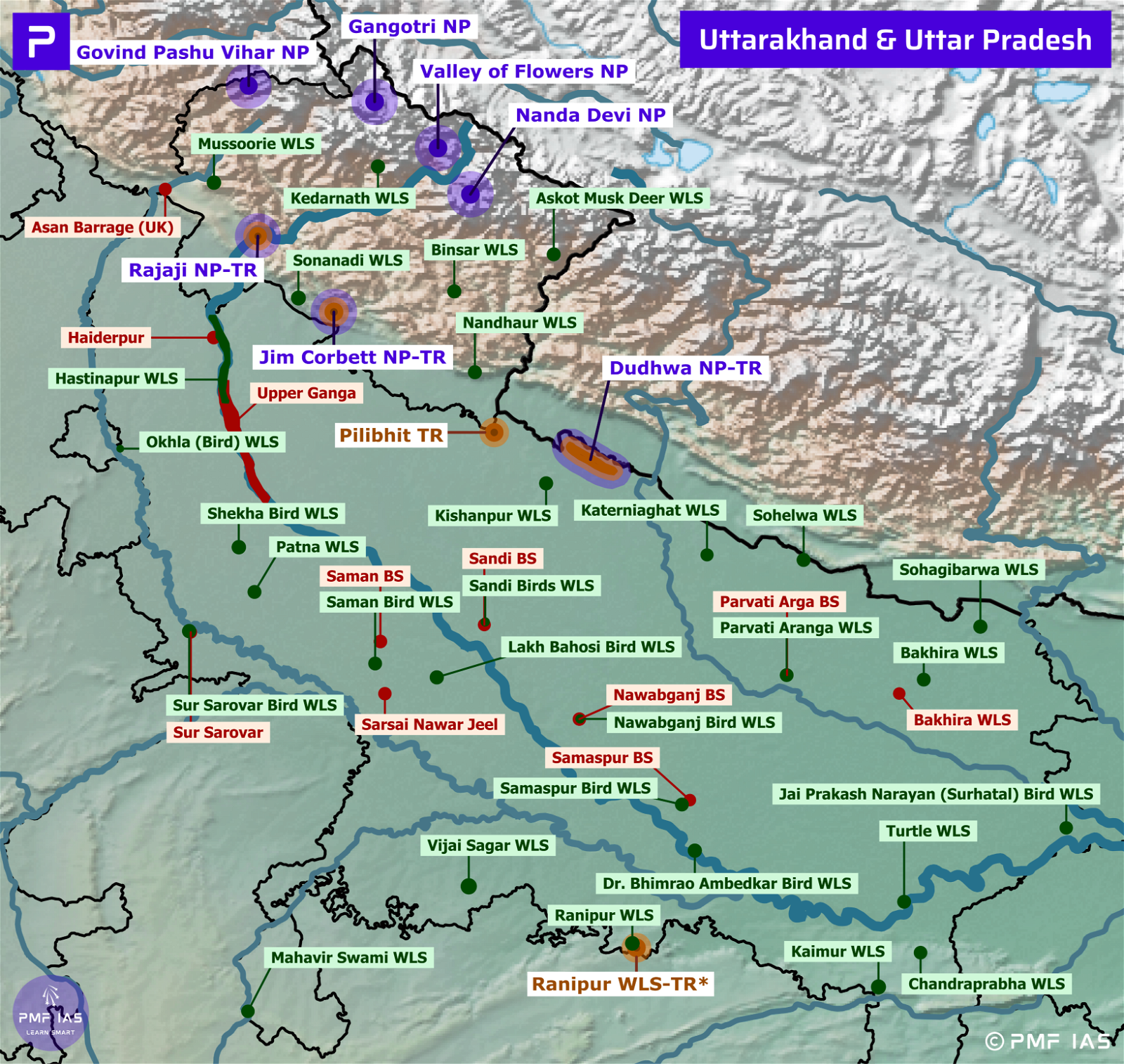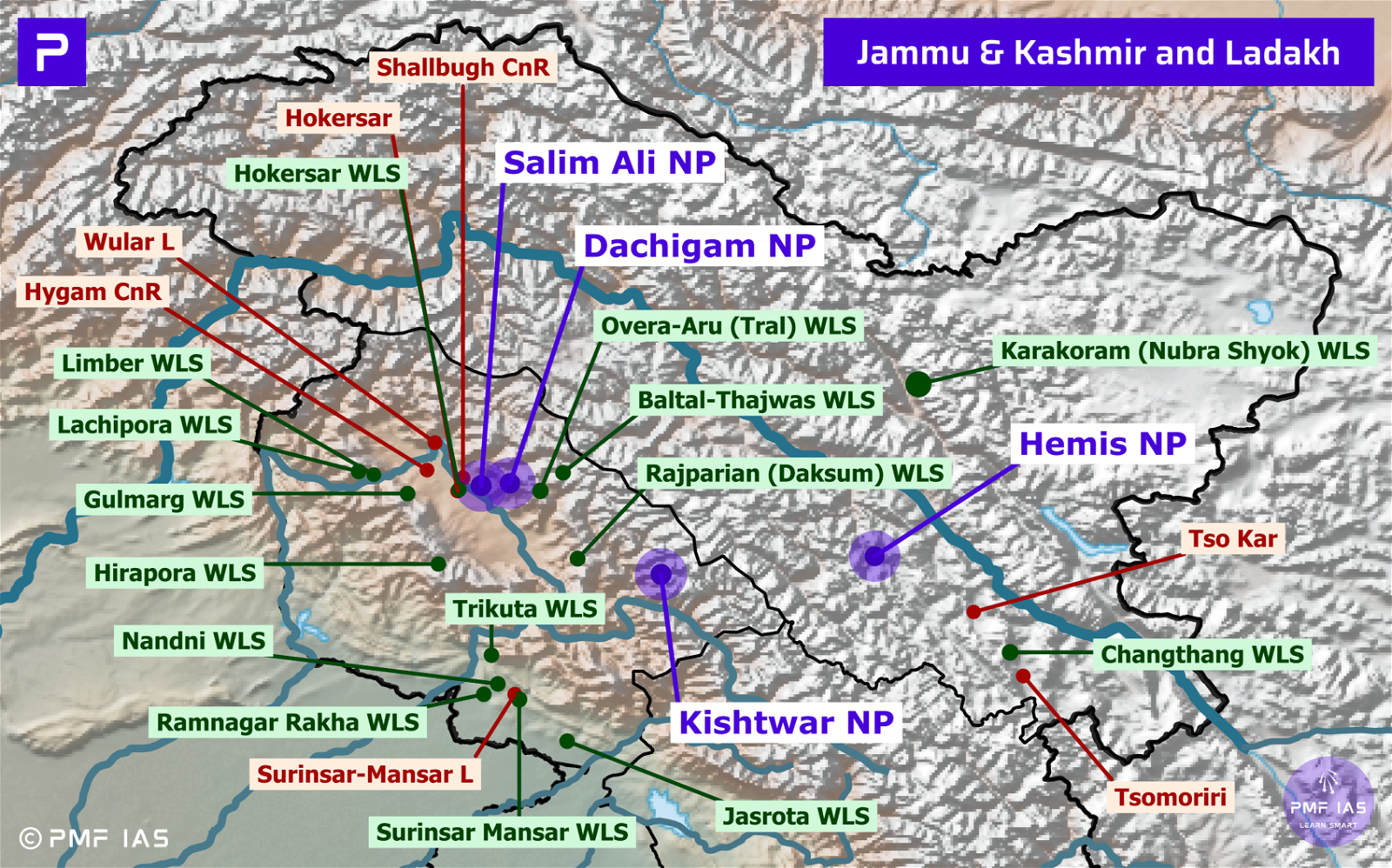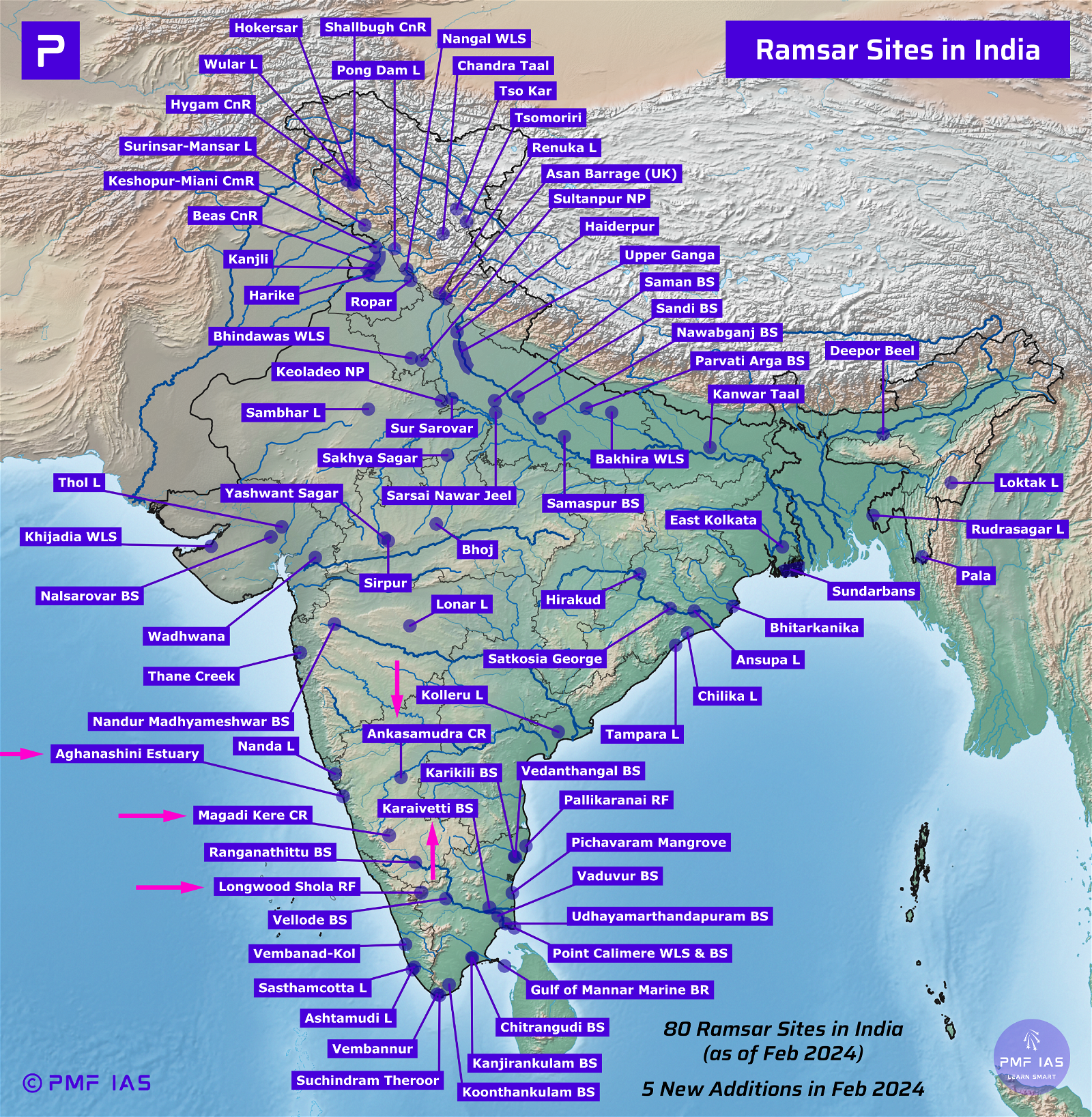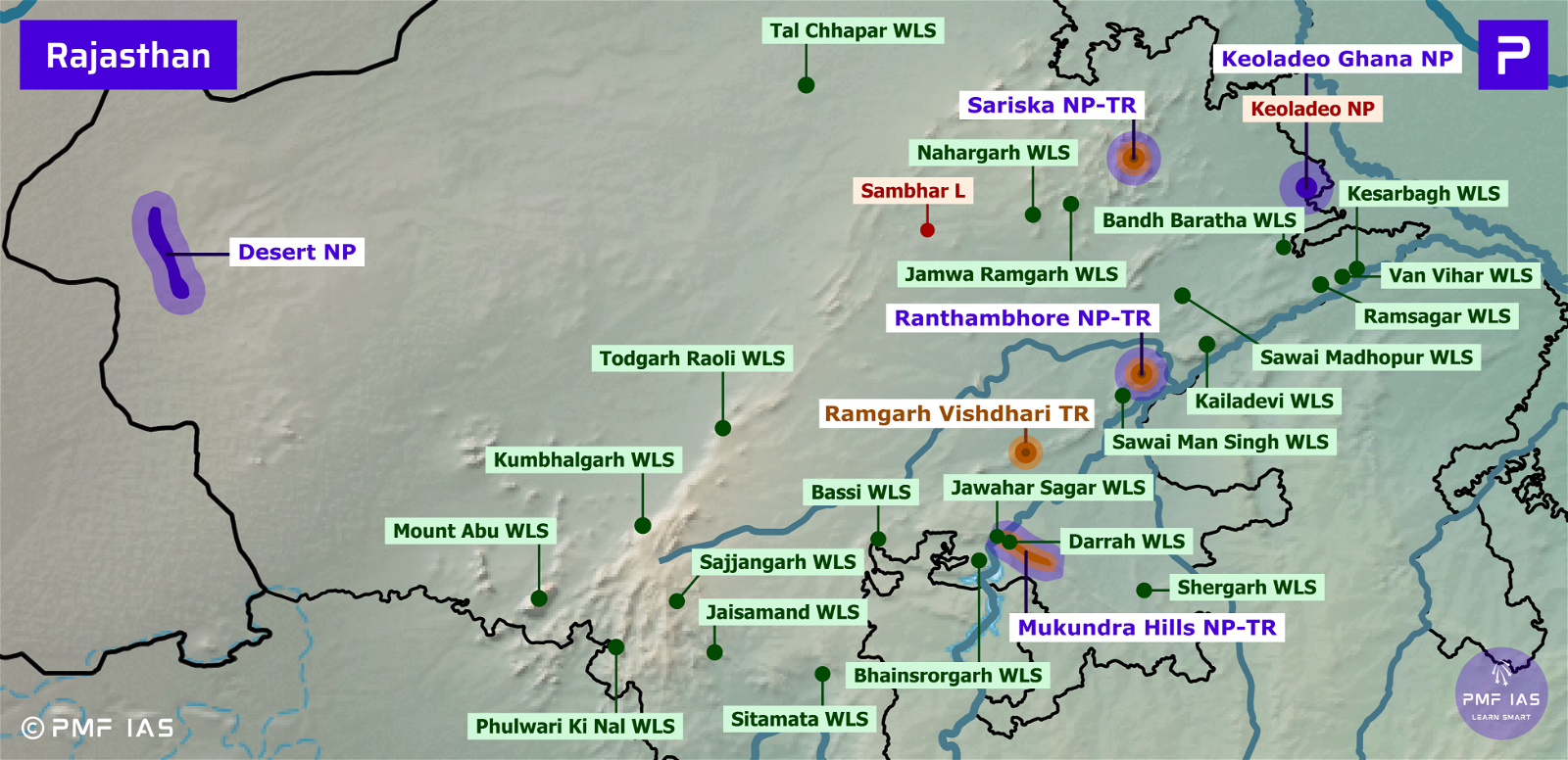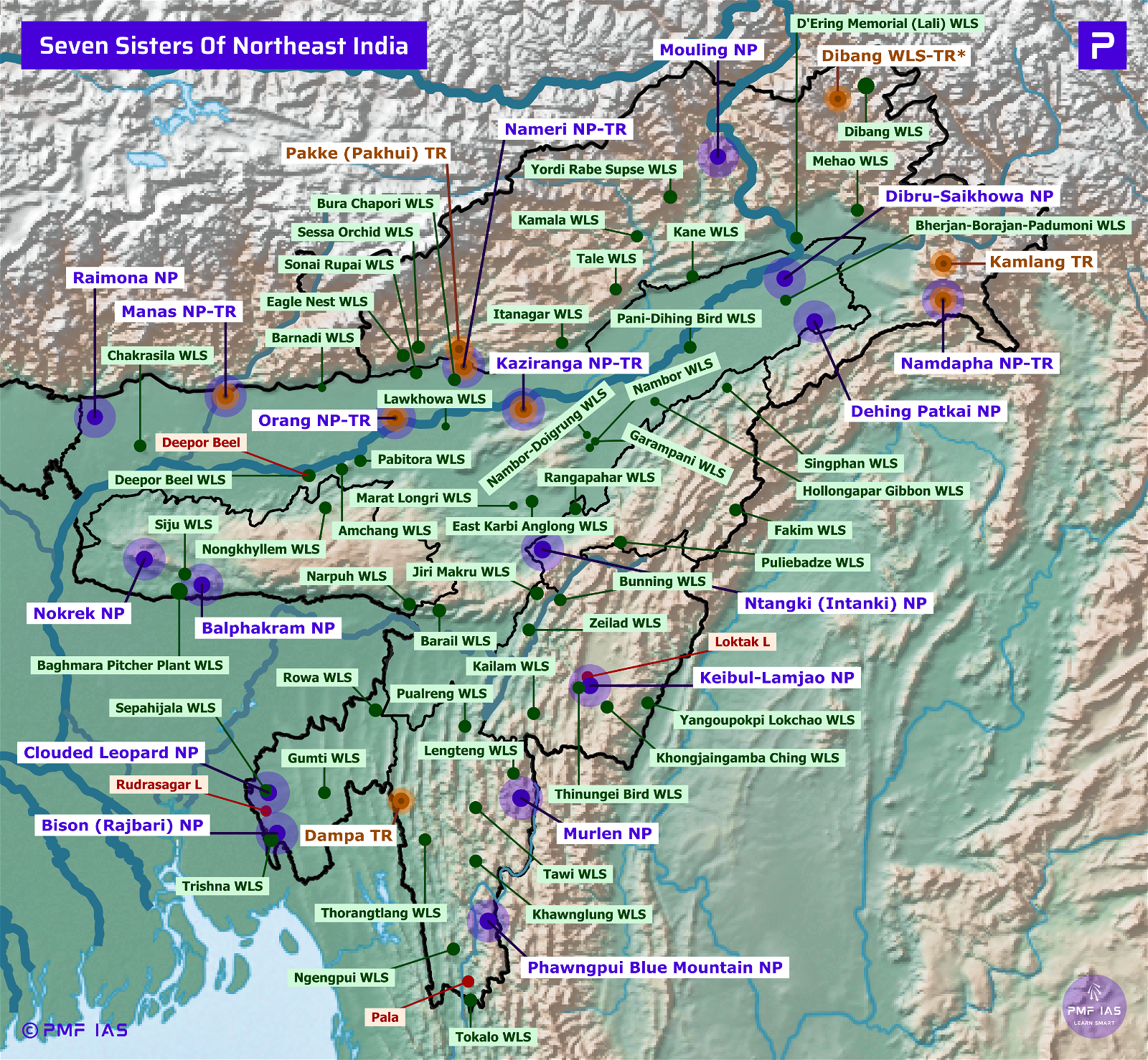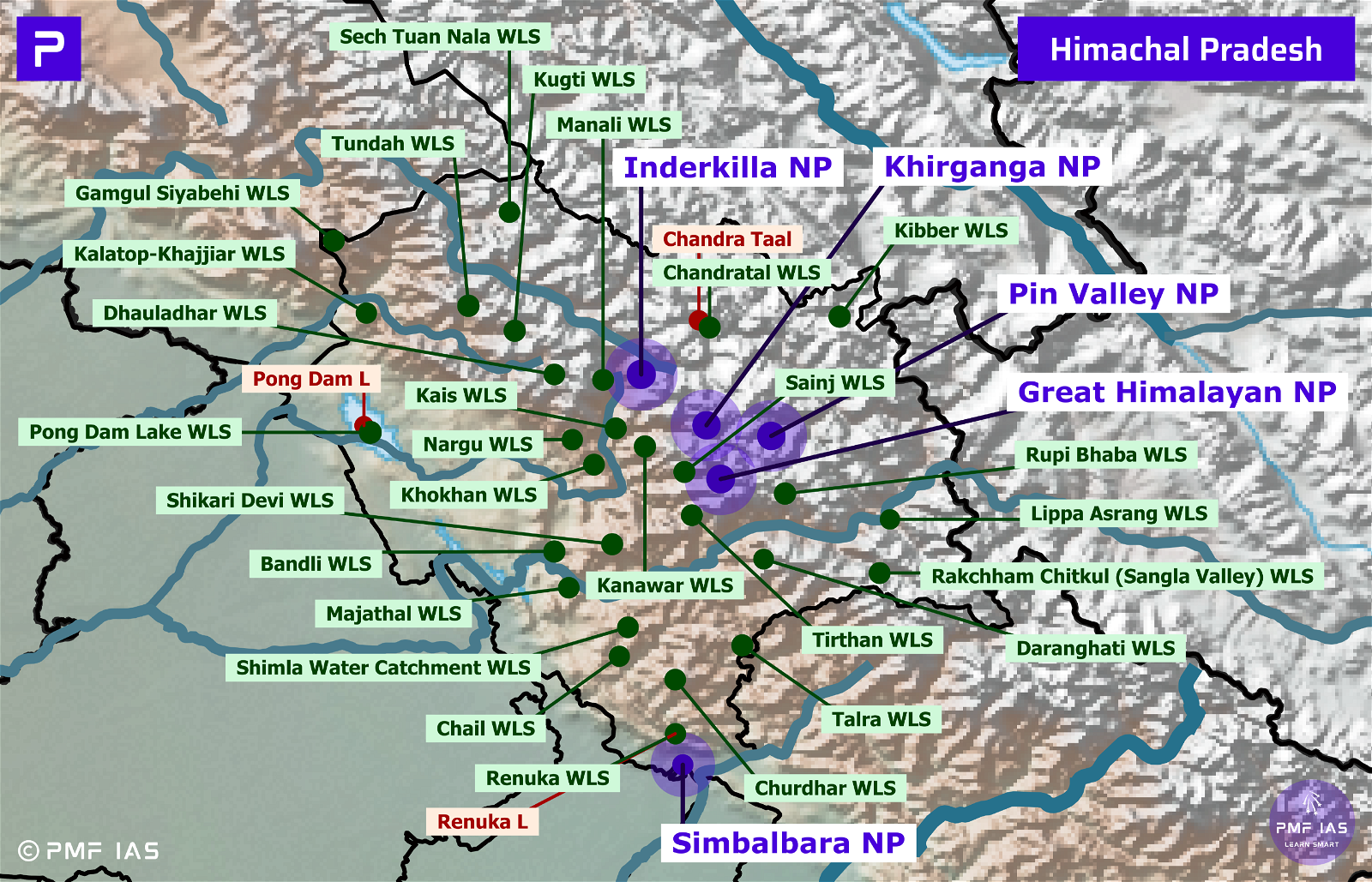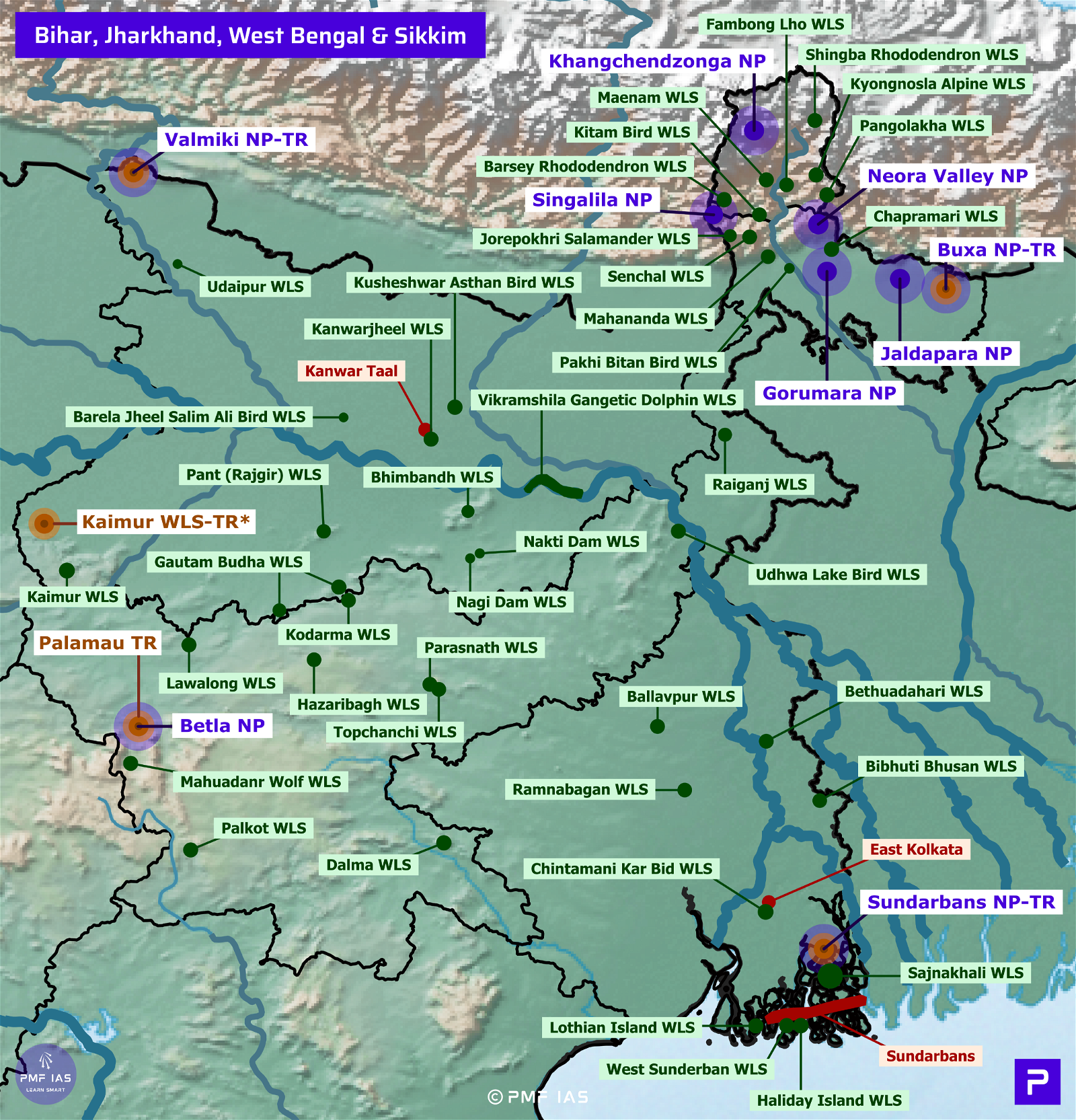
Andhra Pradesh National Parks, Tiger Reserves, Wildlife Sanctuaries & Ramsar Sites
Subscribe to Never Miss an Important Update! Assured Discounts on New Products!
Must Join PMF IAS Telegram Channel & PMF IAS History Telegram Channel
Last updated on April 25, 2024 6:45 PM
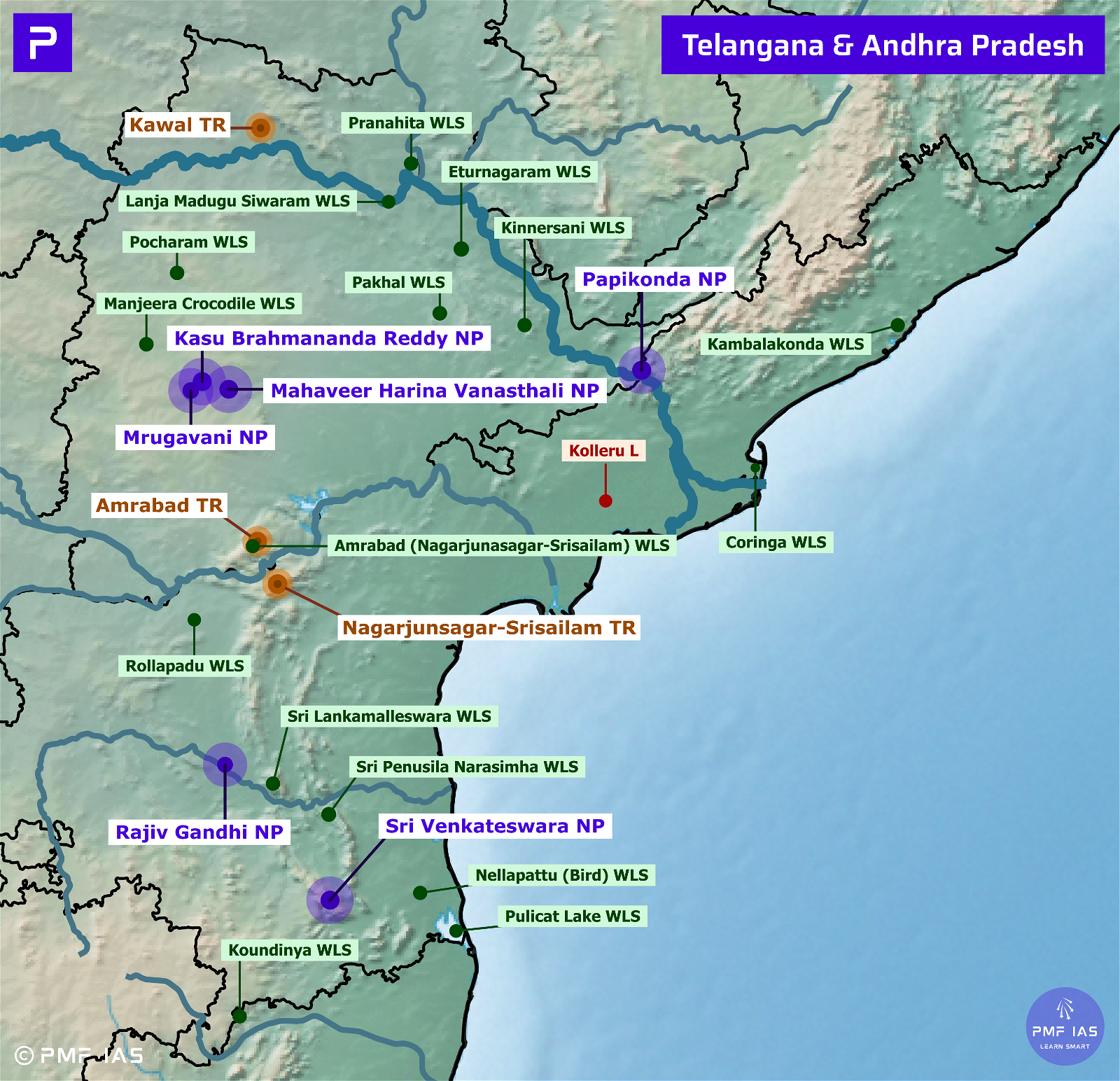
Nagarjunasagar Srisailam Tiger Reserve
- It is the largest Tiger Reserve in India. It spreads over Andhra Pradesh and Telangana.
- It is located inside the Nallamala Hills & the Krishna River cuts through the reserve. Srisailam reservoir and Nagarjunasagar reservoir lies within the reserve.
- Vegetation: tropical dry mixed deciduous forest.
- Major Fauna: Bengal tiger (EN), leopard, Indian pangolin (EN), spotted deer (chital) (LC), sambar (VU), blackbuck, chinkara, four-horned antelope (chausingha) (VU), mugger (marsh crocodile) (VU), etc.
Papikonda National Park
- It is located in the Papi Hills of Eastern Ghats. It is an Important Bird and Biodiversity Area.
- Major Fauna: Bengal tiger, leopard, hyena, Indian gaur, sloth bear, spotted deer (chital), sambar, barking deer (or Indian muntjac), four-horned antelope (chausingha), kanchu mekha (an endemic dwarf goat).
- Major Avifauna: Common peacock, red jungle fowl.
- Major Reptiles: Indian golden gecko, monitor lizard.
- The National Park has a population of both Rhesus macaque (normally found north of Godavari) and Bonnet macaque (usually found south of Godavari).
- Threats: Polavaram irrigation project (will submerge parts of the National Park), and clearing forest for Podu cultivation.
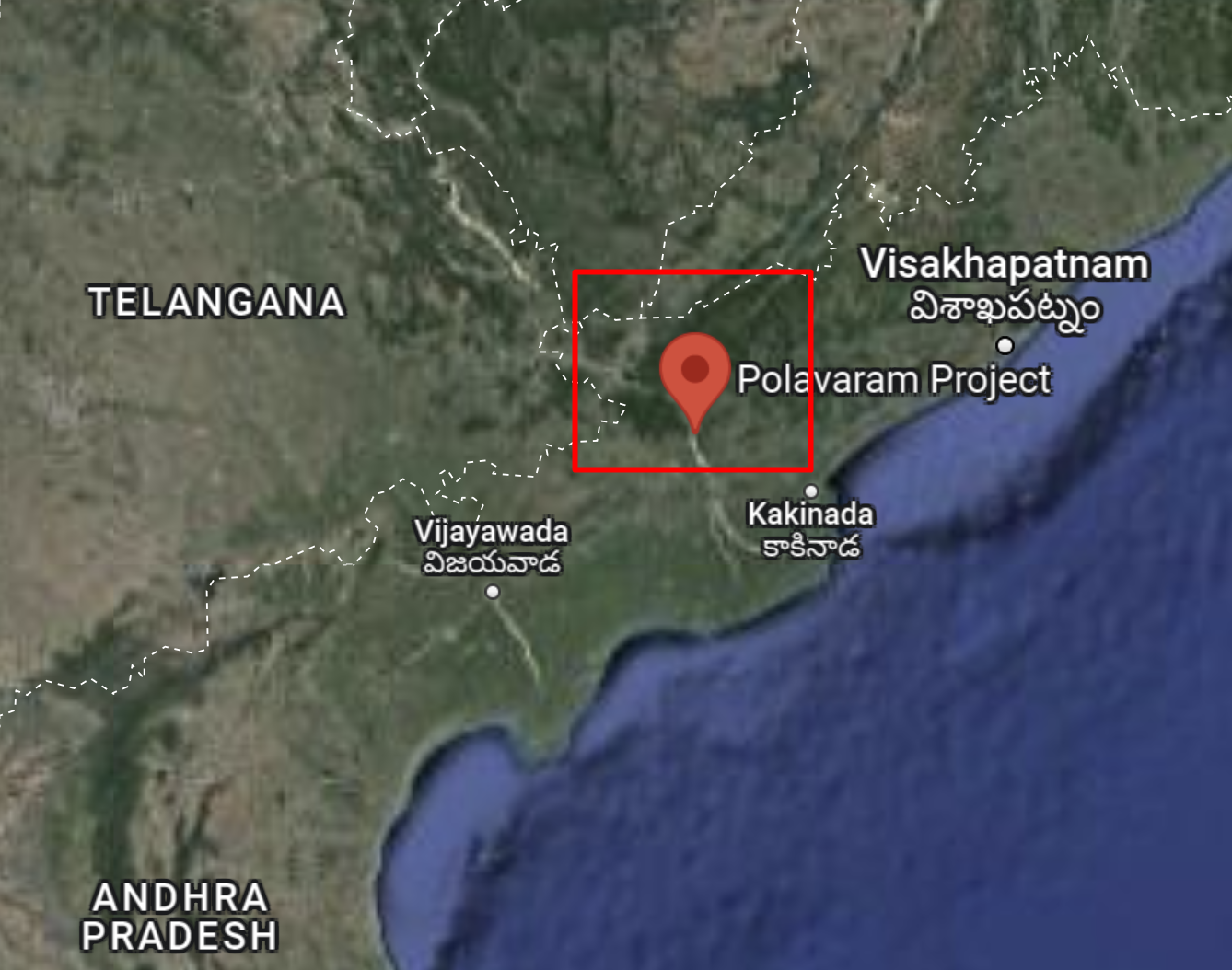
Rajiv Gandhi (Rameswaram) National Park
- It is located in Rameswaram of Kadapa district. It lies on the north bank of the Penna River. Most of it is sandy.
- Vegetation: tropical dry deciduous forests.
- Major Fauna: Spotted deer (chital), mongoose.
- Major Avifauna: Little egrets, parakeets.
- Major Amphibian Fauna: Bull frog.
- Major Reptilian Fauna: Burrowing snakes (Russell, earth boa, John and boa).
Sri Venkateswara Wildlife Sanctuary, National Park
- It is a part of the Seshachalam Hills Biosphere Reserve. It spreads over the Seshachalam hills and the Tirumala hills of Eastern Ghats.
- Vegetation: Dry deciduous and moist deciduous types.
- Major Flora: Red sanders.
- Major Fauna: Slender loris, leopard, sloth bear, mouse deer, chausingha, Indian giant squirrel.
- Major Avifauna: Grey hornbill, pied kingfisher, etc.
- Major Reptilian Fauna: Indian golden gecko.
- Threats: Construction and quarrying.
Wildlife Sanctuaries of Andhra Pradesh
Coringa Wildlife Sanctuary
- It is a part of the Godavari estuary (delta).
- Vegetation: Mangroves and dry deciduous tropical forest.
- Major Fauna: Smooth-coated otter (VU), olive ridley sea turtles (VU), estuarine crocodile (saltwater crocodile; LC).
- Avifauna: White-backed vulture (CR), Indian vulture (CR).
Gundla Brahmeswaram Wildlife Sanctuary
- It is located in the periphery Nagarjunasagar-Srisailam Tiger Reserve in the Nallamala Hills. It has a significant tiger population.
Koundinya Wildlife Sanctuary
- It is located along the Andhra and Tamil Nadu border.
- It is an important elephant corridor.
Kolleru WLS (BS)
- It is a natural eutrophic lake situated between the river basins of the Godavari and the Krishna.
Krishna Wildlife Sanctuary
- It is a mangrove wetland located in the Krishna delta.
Pulicat Lake Wildlife Sanctuary (BS)
- It is located in Andhra Pradesh and Tamil Nadu.
- It is India’s second largest brackish-water eco-system after Chilka lake in Odisha.
Rollapadu Wildlife Sanctuary (BS)
Sri Lankamalleswara Wildlife Sanctuary
- It is located in the southern part of the Nallamala Hills. The Wildlife Sanctuary is known for Jerdon’s courser bird (CR). Penna River separates the Nallamala Hills from Palkonda hills.
- Threats: Red sanders smuggling.
Sri Penusila Narasimha Wildlife Sanctuary
- It comprises a unique forest type viz. the dry evergreen forests. Such vegetation is unique to the Coromandel Coast (Tamil Nadu, Puducherry and Andhra Pradesh)
Others
- Kambalakonda Wildlife Sanctuary: Located in Vishakhapatnam.
- Nellapattu Wildlife Sanctuary (BS): Located in Nellore district.
Ramsar Sites of Andhra Pradesh (1)
Kolleru Lake
- It is a naturally eutrophic (nutrient-rich) lake between the Godavari and the Krishna river basins. It was previously a lagoon, but now it is several kilometres inland due to the coastline of emergence and delta formation. Two seasonal rivers directly feed it. It sustains both culture and capture fisheries, agriculture and related occupations.
- Threats: paddy cultivation, overexploitation, flooding in monsoon season, etc.
- Endangered Fauna: Grey Pelican/Spot-Billed Pelican (VU)
Last updated on April 25, 2024 6:45 PM





